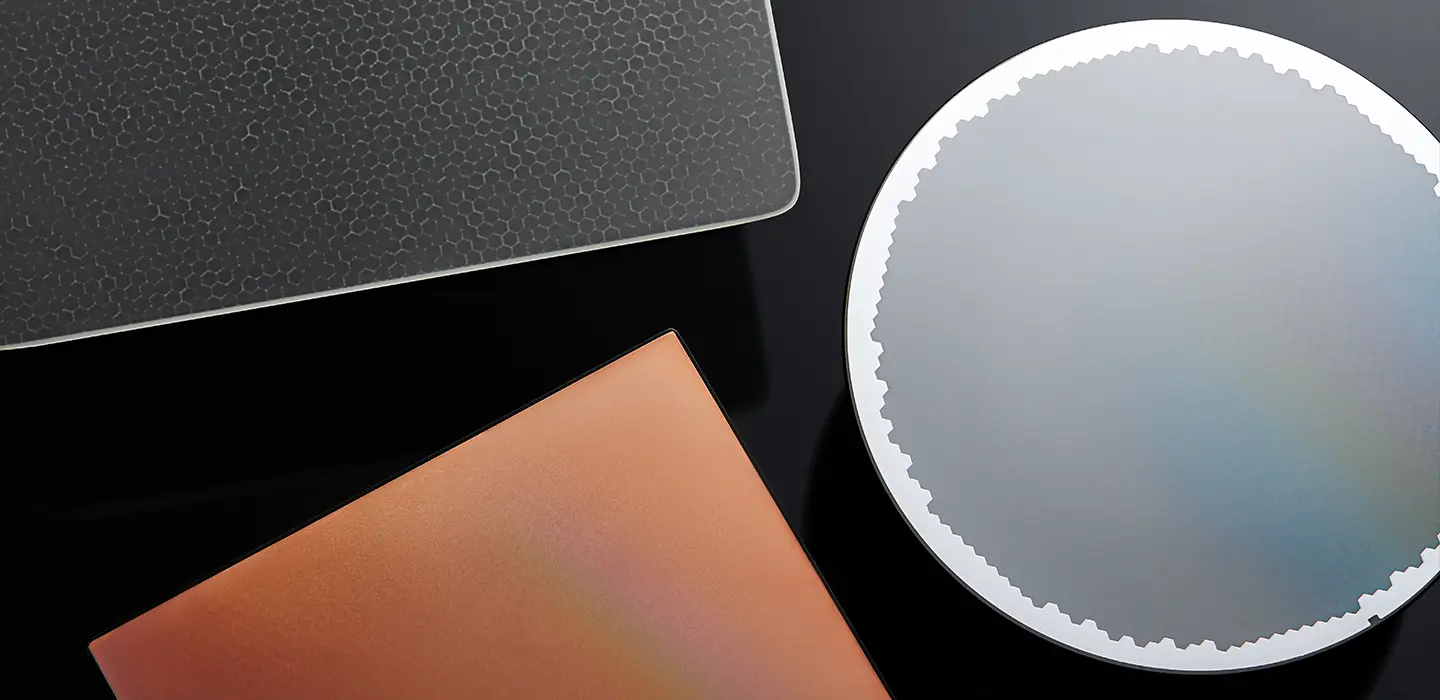
Microchannel Plates
A typical microchannel plate (MCP) is a glass disk consisting of a microchannel substrate and a solid rim border.
Thanks to a complex of unique properties, MCPs are used in a wide variety of fields and areas of science and technology, but primarily to enhance electronic images in such night vision equipment as image intensifiers (IITs). MCP is a core element of IIT on which the night vision device (NVD) is built.
The microchannel plate as part of the night vision devices is the main factor for high quality images.

Appearance of new generations of IITs is mainly related to the improvement of electronic parameters of microchannel plates used in their design.
MCPs from VTC Baspik have low outgassing, high mechanical strength and long life.
MCPs are used to amplify weak signals and determine position parameters of particles in a variety of image detectors, as part of photoelectronic and X-ray vacuum devices, field-ion microscopes.
A distinctive feature of MCPs and MCP-detectors is their high sensitivity to electron flux, ions, fast response time resulting from the short (subnanosecond) electron transit time, and low dark count density.
The structure and operating principle of MCPs
Possible applications for MCPs
- diagnostic, monitoring, and control systems for charged particle beams at accelerators
- medical nuclear diagnosis and treatment instruments
- devices for non-destructive inspection and analysis of substances in semiconductor, food-processing, pharmaceutical industries, toxicological and drug control
- systems for oil and gas exploration, atomic analysis of metals and alloys
- photon counting detectors for space research systems
VTC Baspik manufactures microchannel plates with 4, 5, 6, 8, 10 μm channels of different designs: circular, square, rectangular, with a central hole, complex configurations and different overall dimensions. Channel diameter variation does not exceed 1%. It is also possible to apply various coatings (CsI, KBr, MgO, Au) on the MCP surface and produce them in a variety of overall dimensions.

MCP Detection Capabilities
The MCP is capable of detecting input events of various physical nature, including ultraviolet and X-ray radiation, as well as penetrating nuclear radiation: fluxes of protons, neutrons and other particles, convert them into electron fluxes, which are further amplified in the MCP channels.
Efficiency of application of MCPs for different tasks
| Types of radiation | Energy and wavelength | Detection efficiency (%) |
|---|---|---|
| Electron | 0.2 keV – 2 keV 2 keV – 50 keV | 50- 85 10- 60 |
| Ion (H⁺, He⁺, Ar⁺) | 0.5 keV – 2 keV 2 keV – 50 keV 50 keV – 200 keV | 5 – 58 60 – 85 4 – 60 |
| UV | 300 Å – 1100 Å 1100 Å – 1500 Å | 5- 15 1- 5 |
| Soft X-ray radiation | 2 Å – 50 Å | 5 – 15 |
| Hard X-ray radiation | 0.12 Å – 0.2 Å | Up to 1 |
| High energy particles (ρ, π) | 1 GeV – 10 GeV | Up to 95 |
| Neutron | 2.5 MeV – 14 MeV | 0.14 – 0.64 |